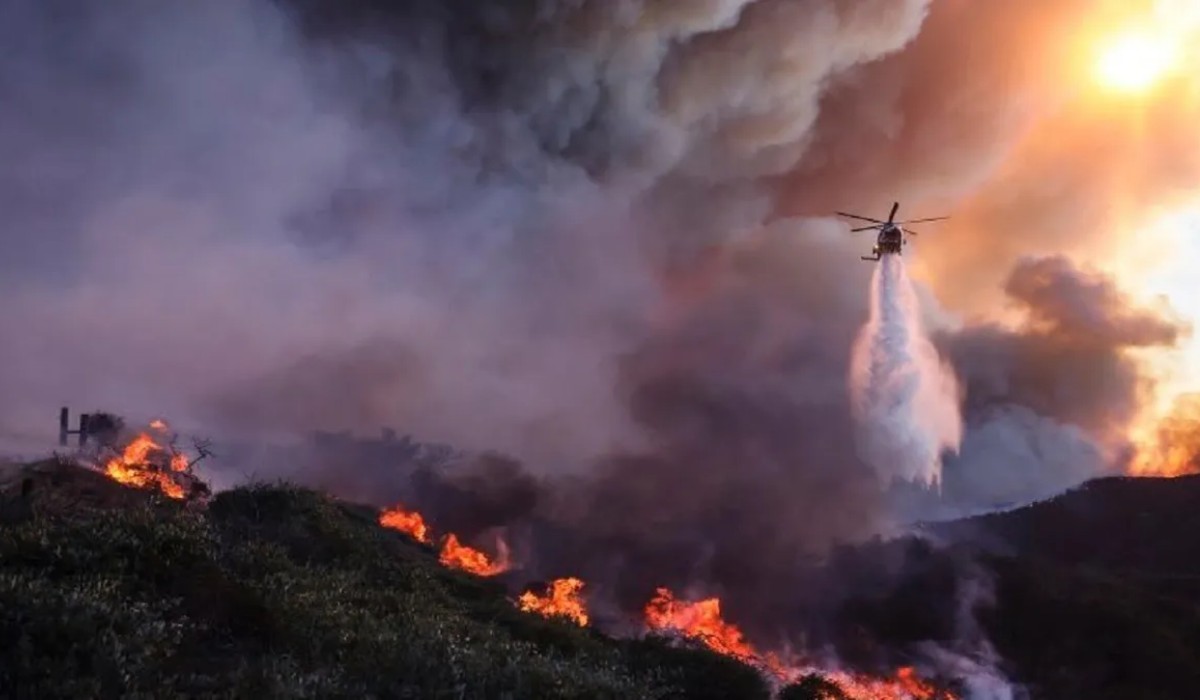The world is slipping into a new era of heightened tension. Across multiple regions, conflicts are no longer isolated events — they are linking together, creating what many experts now see as the unmistakable signs of large-scale war risk. The skies are raging with drones and missiles, borders are fraying under pressure, and global order is cracking. The question we face: Are we truly on the brink of a larger global war?
Rise in Armed Conflict: Alarms Sounding
Experts around the world are raising red flags. According to the World Economic Forum (WEF) Global Risks Report 2025, “state-based armed conflict” tops the list of current global threats. Twenty-three percent of surveyed leaders identified it as the single greatest risk for 2025.
The report found nearly 60 armed conflicts were active in 2023, the highest number on record.Already, elements of these conflicts are crossing borders: hybrid war tactics, cyber-attacks, drone strikes, and proxy engagements are no longer contained within one theatre. The lines between warzone and home front are blurring.
Also Read:Cloudburst in Dehradun: What It Reveals About Rising Climate Risks
Multiplying Fronts — From Europe to the Middle East
In Europe, the war between Ukraine and Russia has expanded its footprint beyond traditional battlefield limits. Analysts point to missile attacks, drone incursions, and even foreign combatants as signs that the conflict has “elements of a global character.”
Meanwhile, in the Middle East, the confrontation between Iran and Israel—alongside their respective allies and proxies—has begun to draw in external powers. Chinese President Xi Jinping warned that if the Middle East is unstable, “the world will not be at peace.”
And on the economic-geopolitical front, frontline issues such as tariffs, technology decoupling, and critical-minerals competition—especially between United States and China—are adding combustible fuel to the war risk.
Why This Could Turn Global
Several structural factors combine to make this era uniquely dangerous:
- Geopolitical Recession: International institutions and alliances that once underpinned stability are weakening. The WEF report calls the current era a “geopolitical recession” — meaning that global order is faltering while conflict risk rises.
- Technology & Cyber Fronts: Warfare is no longer just about tanks and bombs. Cyberwarfare, autonomous weapons, and disruption of critical infrastructure are becoming common. The WEF specifically notes how cyber and misinformation risks tie into armed conflict.
- Multipolar Power Struggle: With the rise of China, India and other global south actors, the U.S.-led unipolar era is ending. A shifting landscape means fewer clear norms and less deterrence.
- Regional Conflicts Linking Up: What were once regional flare-ups are now interconnected. A border skirmish in one region triggers alliances, arms flows, and proxy conflicts elsewhere. The Atlantic Council flagged the danger of a “continent-spanning conflict zone” from North Africa through Asia.
Flashpoints to Watch
Several specific flashpoints could ignite broader escalation:
- Taiwan / South China Sea: Tensions between the U.S., China and Taiwan remain acute. A crisis in this region could trigger major-power involvement.
- Middle East (Iran, Israel, Gulf states): A misstep—such as a major strike or retaliation—could draw in the U.S., Russia, China and regional proxies.
- Europe-Russia-NATO: If conflict in Ukraine expands or crosses into NATO territory, Article 5 obligations could trigger a continent-wide war.
- India-Pakistan / Kashmir: Any escalation between two nuclear-armed neighbours could lead to regional catastrophe with global spill-over.
- Cyber & infrastructure attacks: Large-scale sabotage of power grids, satellites or financial networks could cascade into kinetic responses.
Why It Might Still Be Avoided
Despite the risks, full-blown global war is by no means certain. Several factors act as brakes:
- Mutual deterrence: Nuclear-armed powers still face the logic of mutual annihilation, which restrains escalation.
- Economic interdependence: Even amid trade wars, global supply chains and markets make constant large war costly and unattractive.
- Diplomatic avenues: Major powers continue to engage — even if imperfectly — in diplomacy, back-channels and conflict-management.
- Public war fatigue: Populations in many countries are weary of war. Governments may be reluctant to launch high-cost, high-risk conflicts.
Why This Matters to Everyone
If a broader global war erupts, the consequences would ripple across every aspect of life:
- Humanitarian catastrophe: Millions more civilians could be drawn into war zones, and displacement numbers could spike dramatically.
- Economic collapse: Global trade, energy supply and financial markets would suffer massive shocks. A war-triggered economic crisis could dwarf past recessions.
- Environmental toll: Modern warfare brings environmental destruction, and in a war involving multiple powers the damage could be immense.
- Technological risk: Use of cyberattacks, autonomous weapons, and even nuclear escalation become more probable in large-scale war.
- Global governance breakdown: If war expands, international norms and institutions could fail, paving the way for extended instability.
What We Can Do to Prevent It
Prevention is possible — but it demands urgent action:
- Strengthen diplomacy and conflict-prevention: International actors need to invest in early-warning systems, mediation and conflict resolution. The WEF stresses preventive diplomacy as key.
- Upgrade deterrence and defense while managing risk: States must prepare without provoking escalation — balancing readiness with strategic restraint.
- Protect critical infrastructure: Cyber- and infrastructure-hardening are vital to prevent accidental escalation from sabotage or cyber-attack.
- Reinforce multilateral institutions: Rebuilding trust in international organisations is essential to manage shared risks.
- Educate the public and build resilience: Awareness of war-risk, civil defence measures and resilience planning can reduce the impact if things escalate.
Conclusion
The world is not at war in the classic sense yet — there is no single global battlefield with all powers directly engaged. But the ingredients of a broader global war are in place: multiple major flashpoints, weak global governance, technological change, and shifting power dynamics. As the skies are already raging with drones and missiles, and borders are fraying under stress, the path to a larger conflagration lies open — unless collective action stops it.
Also Read : Nitin Gadkari Major Warning After Operation Sindoor: ‘World War III Could Erupt Anytime











